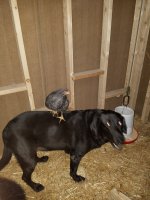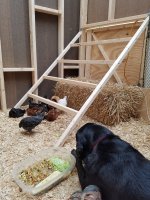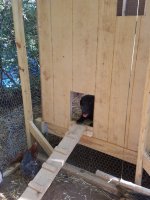dazluv1977
In the Brooder
From the moment I brought my chickies home I included our Labrador Retriever. As I took each out of the shipping box I held them in front of Annie and let her smell them. Then, I placed each into the brooder box. Every time I went to check the chicks I took her with me. There was one time when a couple chicks escaped and as I tried to catch them I noticed Annie was helping to herd the birds back toward me. She never tried to grab them. When I transitioned the chicks to their coop and run, Annie was right there. She continues to go with me to visit the "birdies". She likes to taste their food and watch them play "keep away" when I take them treats. She lays down in their run and the birds come right up to her. A few peck at her and she just ignores them. One chick, in particular, like to catch a ride on her back and has been known to even sit down and roost on her back. Our neighbor has a dog that barks at us when we are out in the run. I noticed Annie barking back, hair standing up and all. She would come over to the run and check the chicks and then back to the fence to bark at the other dog before returning to check the chicks again. This exchange continued until I finally let her into the run and she maintained a protective stance against the nonexistent threat. It is nice to know she wants to protect them. My chicks are 7 weeks old and I hope they co time the amiable relationship.










